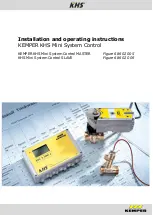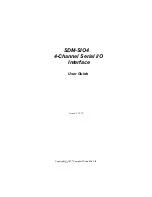
Manual KHS Mini System Control MASTER
2
2.
Area of application
The KEMPER KHS Mini System Control can be used for monitoring and water exchange in
drinking water systems. The water exchanges can be generated and documented as
flushing logs with the -MASTER- control. The dedicated water exchanges prevent
stagnation in the drinking water with the aim of maintaining the drinking water hygiene
in the drinking water systems. The KHS Mini System Control -MASTER- can be
parameterised by a PC-software or by the internal menu.
NOTICE:
If two or more valves are simultaneously opened in a drinking water
system, under certain circumstances pressure fluctuations or a large
pressure drop can occur in the system. For that reason, make sure
beforehand that the required flow pressure is continuously guaranteed
at all tapping points. It is recommended to not make simultaneous
water exchanges.
2.1
Operating modes
for the water exchange
Time controlled water exchange
Temperature controlled water exchange
Volume controlled water exchange
2.2
KHS MASTER/SLAVE technology
The -MASTER/SLAVE- technology can be used to trigger flushing measures for
maintaining the drinking water hygiene for the drinking water system. The corresponding
operating modes can be individually configured for each individual water-exchange
group. Positioning the individual -MASTER- or -SLAVE- controls directly on the water
exchange groups ensures short wiring distances for interconnection.
2.3
Water exchange groups
Shown in Ill. 2.1 as an example is a KHS
Mini System Control -SLAVE- (2) in
connection with a water exchange group
which comprises a KHS Isolating valve (4),
Temperature sensor (1), Volume flow sensor
(3) and a KHS Drain (5). The components of
the water exchange group are only listed as
examples here. The operating mode
depends on the components. In the example
illustrated, the -SLAVE-(2) controls the
specified water exchange groups. It is
connected with the -MASTER- through a
CAN bus cable.
(5)
Note:
Maintenance cut-offs are re-
commended in front of the
Volume flow sensor (3).
Ill. 2.1 Illustration of a water exchange
group
(1)
(2)
(3)
(4)





































